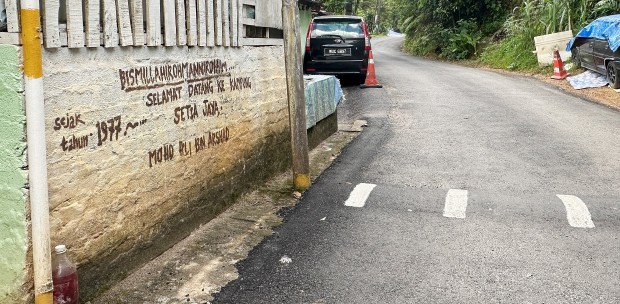IF we were privileged to do it, we would like to commit all 43 victims’ names to memory — to the last letter, proper pronunciation of names, a thumbnail of their background and, ideally, a vivid impression of what they were in life, from crew to passenger.
It’s not that difficult: names and pictures of victims have been published in the early days of the catastrophe, with heartfelt remembrance and tributes pouring in from friends and families in the mainstream press, social media and across personal messages and letters.
Preparations for the return home of the victims have been well conceived and prepared by the authorities and while sombre and sad, it is an opportunity to observe a very unique ceremony second only to the Tanjung Kupang crash of 1977.
Before the 20 bodies were shipped home, they were given their final rites in Amsterdam by the respective clergy and religious officials, each body hermetically sealed in individual closed caskets.
The rites were performed in private away from public glare. Were families of the victims even present during that time? Only a few, given the delicacy, complexity and security of the circumstances of the deaths.
These are extenuatingly grave circumstances, how these bodies were carefully treated because of the way they were mistreated in the first place after their Boeing 777-200 was shot down, either by a ground-to-air missile or a jet fighter machine gun, over airspace contested by Ukrainian and pro-Russian rebels.
In any case, the deaths of crew and passenger are cold-blooded and evil, even if stemmed from an error of aircraft identity. There will be time enough before retribution is served on the perpetrators.
In any event, once the bodies arrive safely, they will be transferred to the hands of their respective next of kin and the final proper burial rites can be performed.
At the very least, in the rigorous DNA profiling in Amsterdam that correctly identified the bodies, closure is assured for the families.
We feel and relate to the other families whose kin have not been found or difficult to tag. Hopefully, their time of closure will arrive soon enough.
It was different when Malaysia Airlines lost its first aircraft in the unresolved 1977 Tanjung Kupang disaster, a commercial plane carrying 100 crew members and passengers that was inconclusively said to have been brought down by the Japanese Red Army.
If the culprits were undetermined, then the funeral rites remained one of the most unique ceremonies in modern times.
Because DNA profiling to establish identity and crime solving in 1977 was at its infancy and generally unavailable, the authorities decided to bury the bodies in a mass grave at Tanjung Kupang.
Once interred, imams, priests, monks and other religious representatives recited the burial rites accordingly, one group after another in a ceremony never before seen and perhaps never again would it be performed.
In that sense, the DNA profiling has done its job, not only to distinguish bodies in name, nationality and religion, but also to determine how they were killed and under what conditions that can help Dutch investigators nail the culprits of the shoot down.
For today and the days coming, when the next batch of bodies return home, the focus is ensuring that the nation mourns properly for its fallen sons and daughters.
Today, between 10.45am and 11.30am, all national radio and television will observe two minutes of silence, a ceremony that will also be observed in all public places where activity and traffic will come to a standstill at this precise moment.
It won’t be as unique as the Tanjung Kupang rites but a full complement of cabinet ministers will be on hand to receive the bodies and an elaborate route to the victim’s final resting places is provided for the public to pay their last respects.
The national day of mourning could also extend before kick-offs of football games, school assemblies and even factory assembly floors as the mark of overarching respect.
And it will be done in respectful eloquence.





